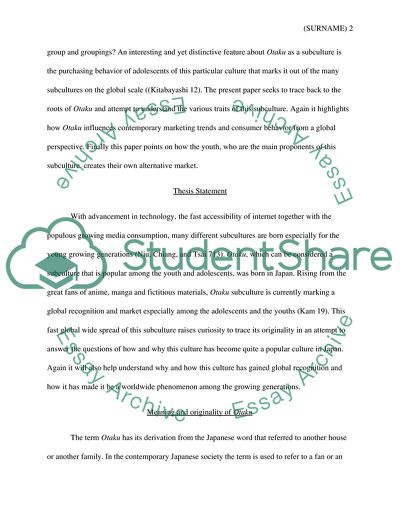Cite this document
(Japans Subculture and How Youth Creates Its Own Alternative Markets Case Study, n.d.)
Japans Subculture and How Youth Creates Its Own Alternative Markets Case Study. https://studentshare.org/culture/1857917-otaku-japans-subculture-and-how-youth-creates-its-own-alternative-markets
Japans Subculture and How Youth Creates Its Own Alternative Markets Case Study. https://studentshare.org/culture/1857917-otaku-japans-subculture-and-how-youth-creates-its-own-alternative-markets
(Japans Subculture and How Youth Creates Its Own Alternative Markets Case Study)
Japans Subculture and How Youth Creates Its Own Alternative Markets Case Study. https://studentshare.org/culture/1857917-otaku-japans-subculture-and-how-youth-creates-its-own-alternative-markets.
Japans Subculture and How Youth Creates Its Own Alternative Markets Case Study. https://studentshare.org/culture/1857917-otaku-japans-subculture-and-how-youth-creates-its-own-alternative-markets.
“Japans Subculture and How Youth Creates Its Own Alternative Markets Case Study”. https://studentshare.org/culture/1857917-otaku-japans-subculture-and-how-youth-creates-its-own-alternative-markets.


